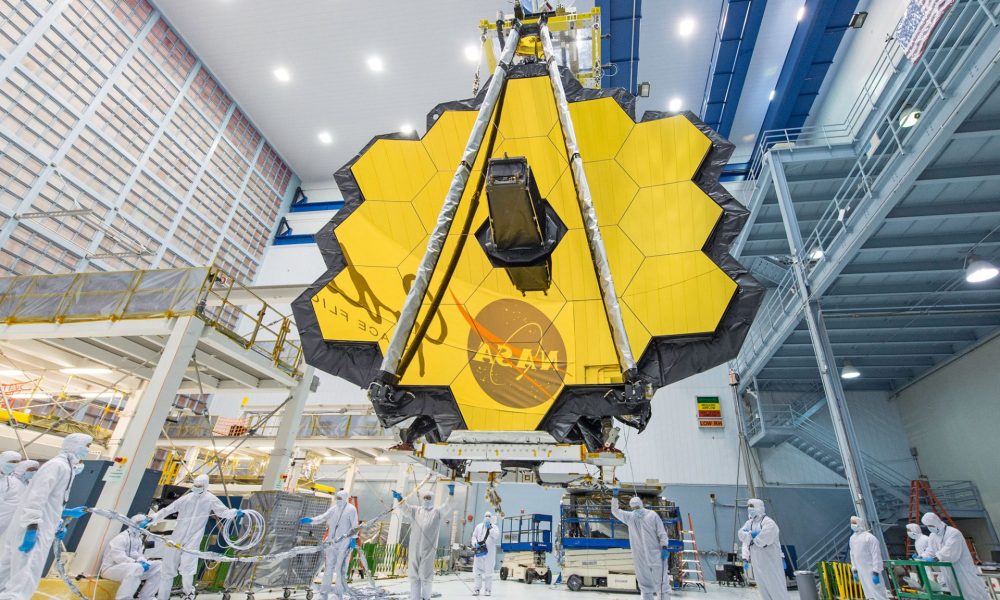Looking Deeper Into The Universe
Some megaprojects involve gigantic infrastructures, like, for example, the 27-kilometer diameter circle of the CERN particles accelerator or the 800-mile-long neutrino experiment of DUNE.
Others can be qualified as megaprojects not because of their size but because of their sheer complexity, costs, and how transformative they are to our understanding of the Universe.
A good example of this is the James Webb Space Telescope (JWST). This infrared light space-based telescope is the most powerful and largest ever created. The telescope takes its name from James E. Webb, the legendary administrator of NASA from 1961 to 1968 during the Mercury, Gemini, and Apollo programs.
Source: NASA
JWST is so powerful that it could equally help us observe the very first stars to have ignited in the Universe and find potentially habitable exoplanets. And to obtain these results, scientists and engineers have worked wonders to push the limit of what telescopes could achieve.
Why Put A Telescope In Space?
The first thing to understand about the James Webb Space Telescope is why it needs to be in space in the first place. After all, lifting complex machinery into space is a lot more difficult than building the same thing down on Earth.
By going out of the atmosphere, telescopes can get a view of the Universe undisturbed by light pollution, atmospheric turbulence, and, of course, clouds and weather patterns.
This is the reason why the relatively small Hubble telescope performed so well compared to ground-based telescopes. But this was extra important for JWST, as this telescope is measuring not visible light, but infrared light.
Water vapor in the Earth’s atmosphere absorbs infrared radiation. Ground-based infrared telescopes tend to be placed on high mountains and in very dry climates to improve visibility, but this is still not ideal and creates an inherent limit to what they can observe.
JWST is the latest and by far most powerful in a line of space-based infrared telescopes, following the Infrared Astronomical Satellite (IRAS), the Spitzer Space Telescope, and the Wide-field Infrared Survey Explorer (WISE).
JWST was launched in 2021 on a French Ariane 5 launcher, from French Guyana. A month later, it arrived at its destination, the Sun-Earth L2 Lagrange point, about 1.5 million kilometers (930,000 miles) from Earth.
Lagrange points are positions in space that stay constant compared to Earth, despite not being in orbit of Earth. Currently, another Lagrange point (L1) is used by DSCOVR: Deep Space Climate Observatory.
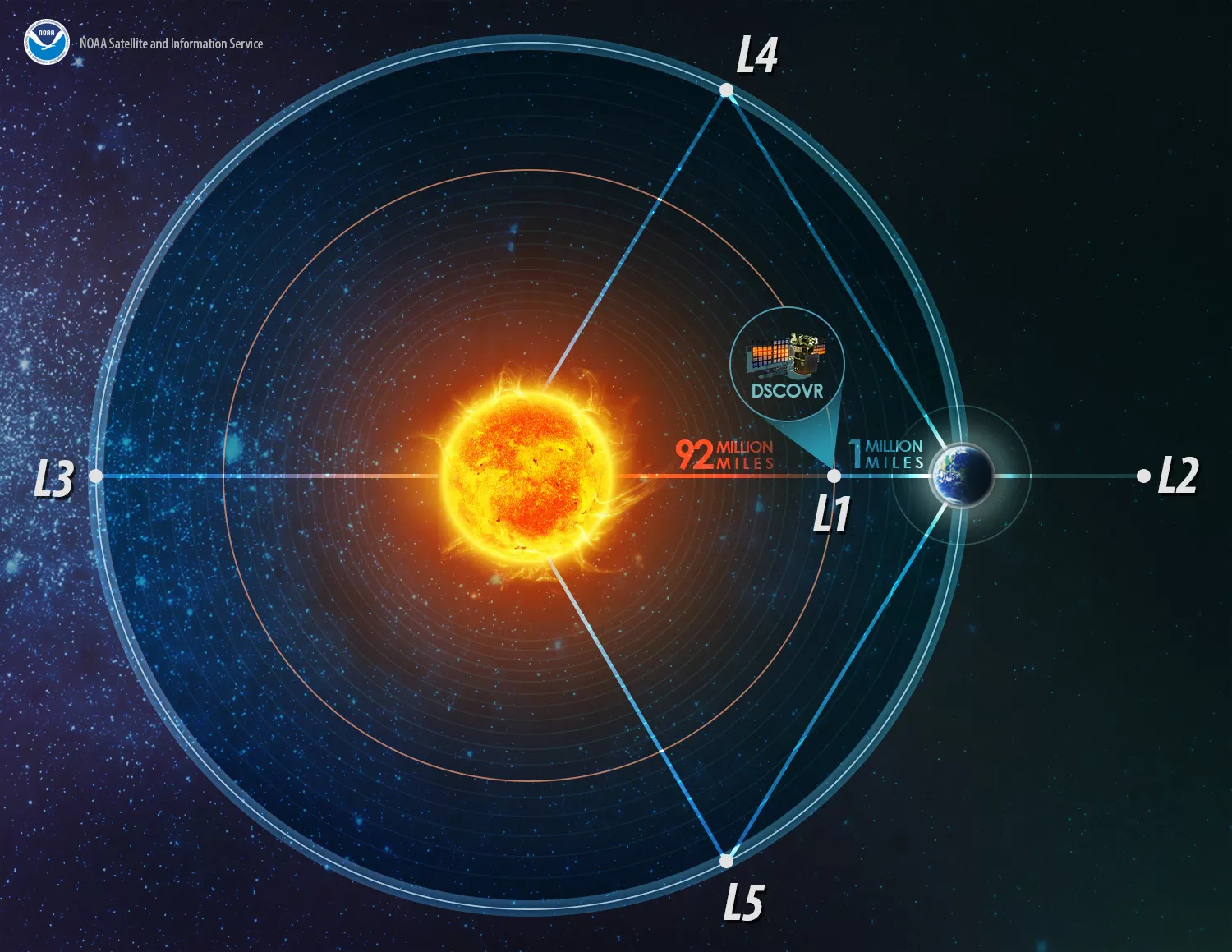
Source: NOAA
The position of JWST means it can observe almost any point in the sky throughout the year, as long as it is not in the direction of Earth and the Sun; 39% of the sky is potentially visible to Webb at any time.
Why Use Infrared Observation?
Distant Objects
For very distant objects in the Universe, a phenomenon called “redshift” occurs, moving their light toward the infrared. So, any observation of the very deep (and therefore very ancient) part of the Universe tends to have to be done in the infrared part of the light spectrum.
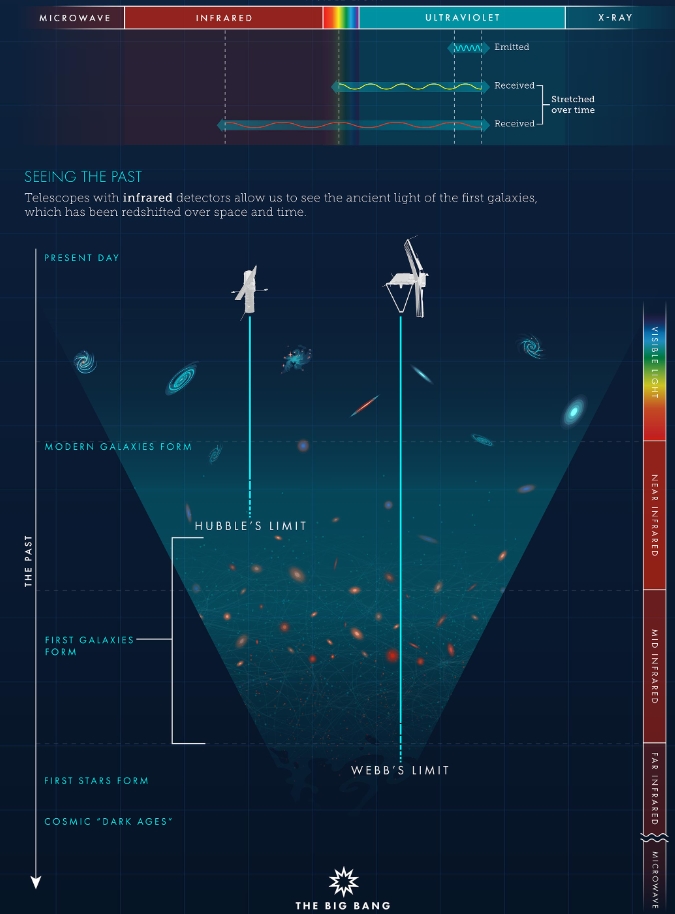
Source: SciTech Daily
Due to this phenomenon, Hubble could only see so far in distance and back in time as the first galaxies formed. By looking into infrared, JWST can see as far in the history of the Universe as the first stars forming.
Exoplanets
Infrared observations have another advantage, regarding the analysis of exoplanets this time. JWST will carry a system called a coronagraph: this will block the light coming from a star, letting us see better the less bright objects orbiting like small exoplanets.
The image of an exoplanet would just be a spot, not a grand panorama.

Source: NASA
Still, the light from that spot can be analyzed through a method called spectroscopy, which can tell us the composition of the atmosphere of these exoplanets. At infrared wavelengths, the molecules in the atmospheres of exoplanets have the largest number of spectral features, so we will get a lot more information than when using visible light.
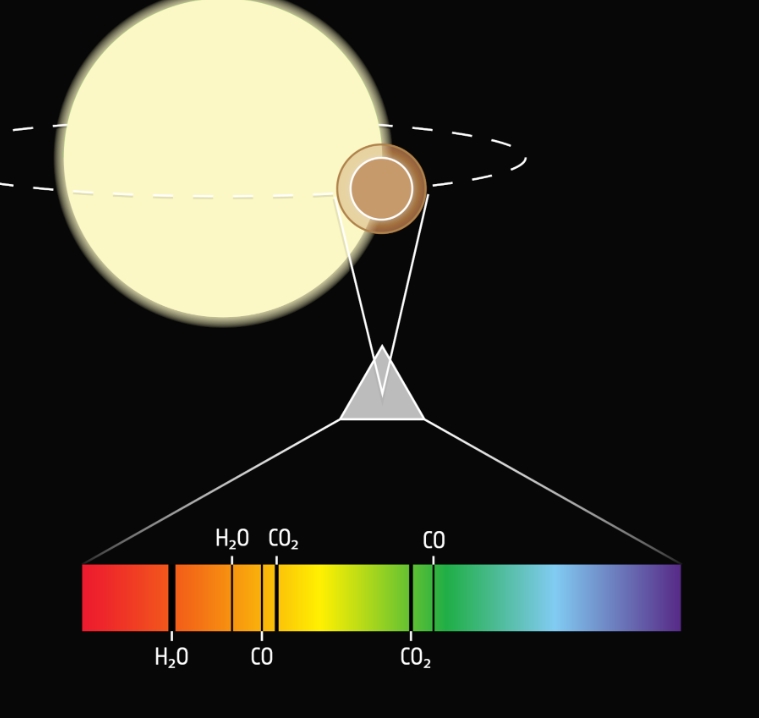
Source: ESA
Through this method, we could not only determine if planets in other solar systems have water and CO2 but also methane, ammonia, or complex molecules potentially indicative of alien life.
JWST Compared to Hubble
Regarding its observation ability, JWST is mostly focused on near-infrared light, but can also see orange and red visible light, and mid-infrared range, depending on the instrument being used.
It can detect objects 100x less bright than Hubble could. And in many cases, it is used to look back at objects Hubble revealed in the first place to get new insights about them.
However, the image sharpness will be comparable to Hubble due to the fact that infrared images are inherently less sharp than visible light due to the longer wavelengths.
Another difference between the two iconic telescopes is that JWST is able to see through gas clouds, blocking visible light, but not infrared. So JWST’s version of the famous Pillars of Creation picture, in the Eagle Nebula, reveals many stars inside and around the pillars.
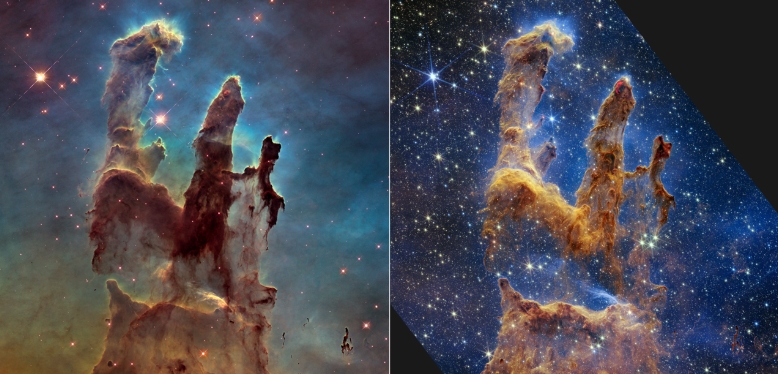
Source: Webb Telescope
JWST Specs
JWST carries a 6.5 meter (21 feet) gold-coated beryllium primary mirror made up of 18 separate hexagonal mirrors, giving it its iconic look.
Each of these mirrors weighs 20kg (44 pounds). The 100-nanometer gold coating provides infrared light reflection and is covered by glass to make it resistant enough. This gives it a light collecting area 6x larger than Hubble. In total, only 48.25g of gold (1.7 ounces) was used.
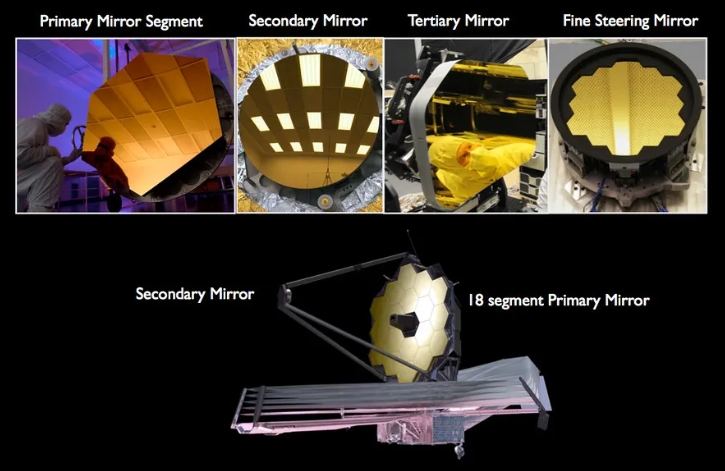
Source: NASA
Webb, contrary to Hubble, is not designed to be serviced by astronauts, because of its long distance from Earth. As a result, all the critical sub-components are dual, for example two Near Infrared Cameras, or are designed to last many years like the mirrors.
JWST is expected to last at least 5 years, with a goal of 10 years of operations. It has, however, enough propellant (to stay in the Lagrange point) for a total of 20 years, so it could last longer if no key part fails.
JWST Budget
In total, the James Webb Space Telescope ended up costing more than $11B, more than 10x the initial estimate by NASA for this project. This price tag explosion threatened the project’s viability in the 2010s, due to the (at the time) budget exploding to “only” $6.5B.
A launch planned initially for 2014, ultimately 7 years late, added to the criticisms.
“The fundamental root cause of the problem is that at the time of (the program’s formal approval), which goes back to July 2008, the budget that NASA was presented with by the project office was basically flawed,” he told reporters in an afternoon teleconference.
The budget simply did not contain the content that the project even knew about at that time. And so from a money standpoint, it was just insufficient to carry out the work.”
John Casani, a widely respected project manager at NASA’s Jet Propulsion Laboratory
As the project took almost 2 decades to be designed and built, it however never went above 3% of NASA’s annual budget. It, however, consumed 1/3rd of NASA’s Astrophysics Division budget between 2003-2021.
And now that JWST is one of history’s most impressive and successful programs in astronomy, most of these debates are being forgotten.
JWST’s Amazing Engineering
Losing Some Weight
The first problem to solve for the designers of JWST was that such a large mirror was going to be too heavy. If they had reused the Hubble’s design, it would have been too heavy to be launched into space.
This is why the choice was made to use beryllium, which is both strong and light enough. Another factor was the extreme temperature of deep space, which could bend out of shape the required extremely precise curvature of the mirrors.
Beryllium was a good option here, too, because it stops changing shape when it is really cold. So the mirrors were manufactured with a “wrong” angle, that would bend exactly to the intended final shape when exposed to the cold of space (-233°C/-388°F).

Source: JWST
Each mirror would ultimately be aligned to a precision equal to 1/10,000th the thickness of a human hair.
Ultra-light materials like composites were also chosen for the backbone of the telescope, saving some further weight.
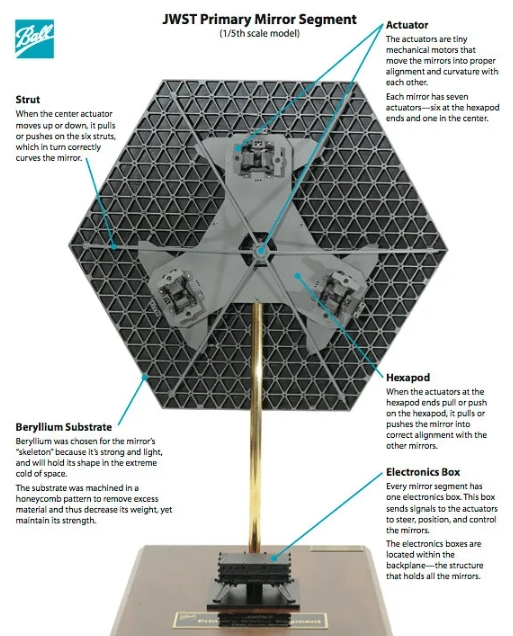
Source: NASA
Folding Up
Another major issue was that the extreme size of the telescope mirror required by this design would not fit in any available rocket.
So it was early on decided to unfold the structure component by component, including the sunshield and the mirrors. How to fold the whole efficiently and to have it unfold reliably was still a concern.
NASA scientists took inspiration from origami, the Japanese art of folding paper, with the final choice going to a hexagonal origami pattern.
This was a high-risk decision for the James Webb design team, as such a complex unfolding had never been done before. And any failure would have doomed the entire project.
You can see how the unfolding worked step-by-step in this short JWST video:
Sunshield
As the telescope is observing its targets in infrared, protecting it from the heat of the Sun was as essential as having the mirrors light enough and properly unfolded.
JWST’s sunshield keeps the difference between the hot and cold side of the telescope at almost 315°C/600°F, thanks to a 5-layer isolation.
The sunshield is as large as a tennis court and made of layers of Kapton E (polyimide film) with aluminum and doped-silicon coatings to reflect the sun’s heat back into space.

Source: NASA
Telecommunications
JWST transmits its data back and receives instructions from Earth through NASA’s Deep Space Network. This passes by ground stations located in Canberra, Madrid, and Goldstone.
Webb can downlink at least 57.2 gigabytes of recorded science data each day, with a maximum data rate of 28 megabits per second.
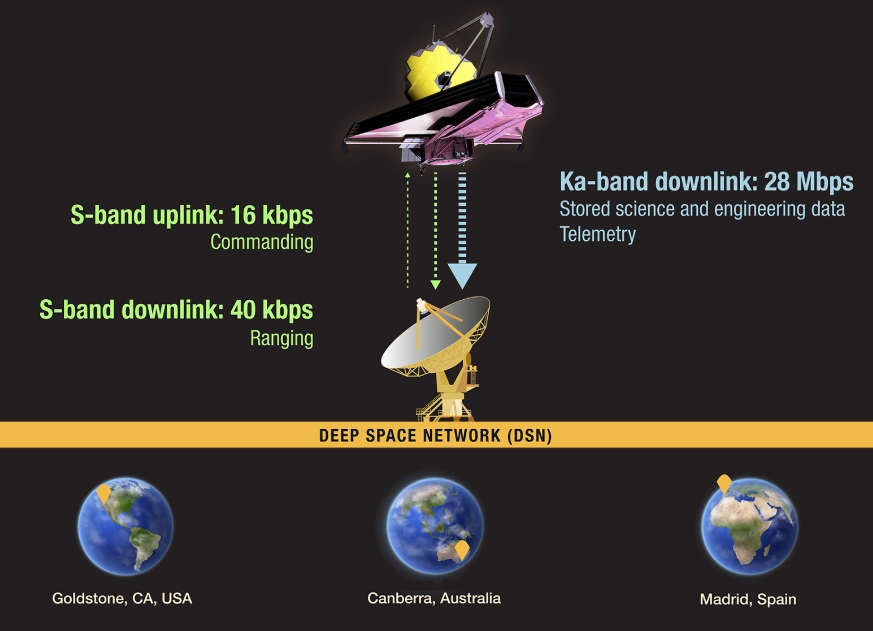
Source: Webb Telescope
Others Components
The rest of the telescope was no less high-tech and high-performance. Honorable mentions can be given to a few pieces of equipment:
- Cryocooler: JWST’s mid-infrared (MIRI) sensors need to operate at -266.15°C/-447°F, colder than even the depths of space. So an extra cooling system had to be added to cool the instrument.
- Backplane: The backbone of the telescope weighs 2.4 tons (5,300 pounds) and provides the absolute motionless position needed for the telescope to take sharp pictures. It was engineered to be steady down to 32 nanometers, which is 1/10,000 the diameter of a human hair.
- Micro-shutters: this grid of 248,000 tiny doors can be individually opened and closed to transmit or block light. This allows JWST to observe simultaneously hundreds of individual objects in a field of stars or galaxies simultaneously. As a result, JWST can perform a lot more observations for a given span of time.
JWST’s Achievements
In operation for just a few years, JWST has already completely changed how astronomers understand the Universe. So, while it is almost impossible to list all that it already did, a few stories are worth further highlights.
Spread Of Newly Formed Carbon
JWST has identified two stars responsible for generating carbon-rich dust a mere 5,000 light-years away in our own Milky Way galaxy. It spotted concentric spherical “shells” formed by the colliding solar winds of the two stars spreading newly formed carbon into the galaxy.
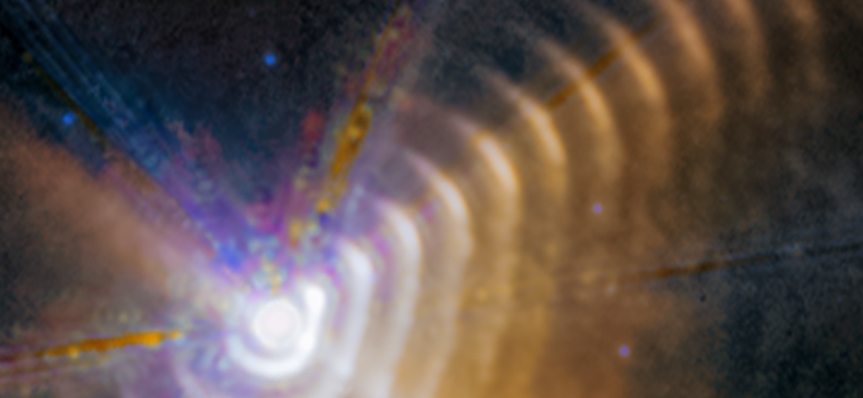
Source: Webb Telescope
Every shell is racing away from the stars at more than 1,600 miles per second (2,600 kilometers per second), almost 1% the speed of light. In this system, the observatory is showing that the dust shells are expanding from one year to the next.
The telescope’s mid-infrared images detected shells that have persisted for more than 130 years. Older shells have dissipated enough that they are now too dim to detect.”
Jennifer Hoffman, a co-author and a professor at the University of Denver
Active Objects At The Edge Of Our Solar System
JWST detects gas ejection from icy “Centaur 29P/Schwassmann-Wachmann“, a comet-like object in the vicinity of Neptune.
They discovered a new jet of carbon monoxide (CO) and previously unseen jets of carbon dioxide (CO2) gas, which give new clues to the nature of the core of the stellar object.
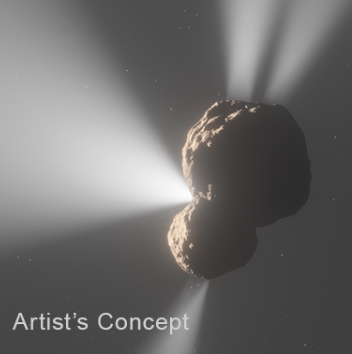
Source: Webb Telescope
Image Of Nearby Exoplanets
JWST caught a direct image of an exoplanet only 12 light-years away from us, Epsilon Indi Ab. The planet is several times the mass of Jupiter, orbiting around a star somewhat similar to our Sun.
It is one of the coldest exoplanets to be directly detected, with an estimated average temperature of 2°C/35°F (for reference, Earth’s average temperature is 15°C (59 °F).
“Cold planets are very faint, and most of their emission is in the mid-infrared.
It is a little warmer and is more massive, but is more similar to Jupiter than any other planet that has been imaged so far.”
Elisabeth Matthews of the Max Planck Institute for Astronomy in Germany.
Complex Molecules in Forming Planets
In the protoplanetary disk forming around a star 1,350 light-years away in the Orion Nebula, JWST detected methyl cation (CH3+).
Meanwhile, the exoplanet K2-18 b could be a Hycean exoplanet, one which has the potential to possess a hydrogen-rich atmosphere and a water ocean-covered surface.
Exoplanets such as K2-18 b, which have sizes between those of Earth and Neptune, are unlike anything in our solar system. Our findings underscore the importance of considering diverse habitable environments in the search for life elsewhere.”
Nikku Madhusudhan, an astronomer at the University of Cambridge
JWST also found several carbon compounds, and even dimethyl-sulfide in the atmosphere of the planet.
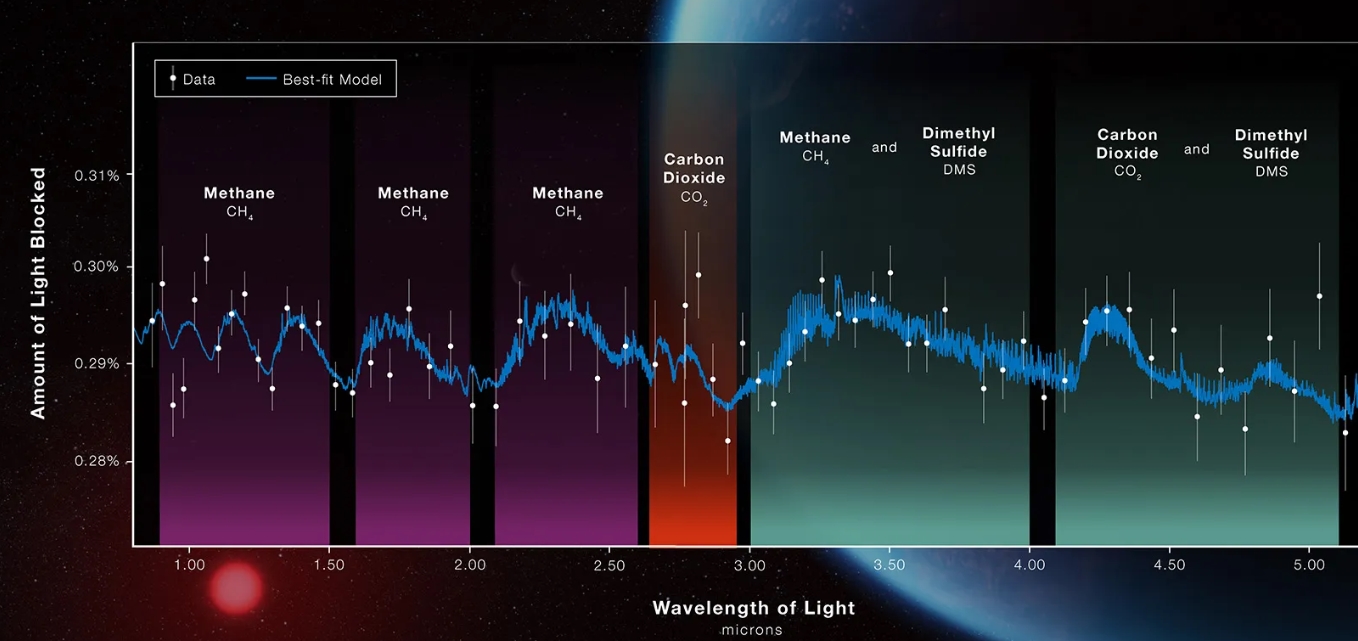
Source: NASA
JWST found for the first time outside of our solar system ethane (C2H6), as well as ethylene (C2H4), propyne (C3H4), and the methyl radical CH3 around a young star.
It also made the first detection of heavy elements from a star merger, resulting in the second brightest gamma-ray burst ever detected, or a kilonova. JWST’s scientists detected tellurium in the explosion’s aftermath.
Most Distant (Ancient) Black Hole Ever Detected
In combination with NASA’s Chandra X-ray Observatory, JWST detected a growing black hole just 470 million years after the Big Bang. JWST found the galaxy, and Chandra the black hole itself.
Source: NASA
We think that this is the first detection of an ‘Outsize Black Hole’ that directly formed from the collapse of a huge cloud of gas.
For the first time, we are seeing a brief stage where a supermassive black hole weighs about as much as the stars in its galaxy before it falls behind.”
Priyamvada Natarajan of Yale University
JWST’s Future
After finding and analyzing exoplanets, JWST is going on the hunt for exomoons. We know these planetary bodies, potentially larger than Earth in some cases must exist, but never had an instrument sensitive enough to detect them. Gaseous giant exoplanets like Jupiter are prime candidates.
JWST will also investigate supermassive black holes and quasars, black holes spitting from their poles at the speed of light star-worth quantity of matter. The telescope will focus on very early specimens of these stellar phenomena.
Lastly, studying galaxies as well as large-scale structures of the Universe very early could create new insights into the nature of dark matter and dark energy that seems to elude scientists for decades now.
JWST’s Main Private Contractor
Northrop Grumman Aerospace Systems
Northrop Grumman Corporation (NOC -0.27%)
A project like JWST is almost always the result of an international collaboration, with, in this case, the participation of NASA, ESA, and the Canadian Space Agency.
It also involved many contractors from the private sector, with the most prominent one being aerospace and defense company Northrop Grumman.
Northrop Grumman is most famous for the creation of the iconic B-2 stealth strategic bomber, each one costing almost a billion dollars. This more than 20-year-old design is going to be replaced by the B-21, which is still in development.
The company is also at the very edge of space technology as illustrated by its work on the state-of-the-art James Webb Space Telescope. The company derives most of its revenues from space and aeronautics systems.
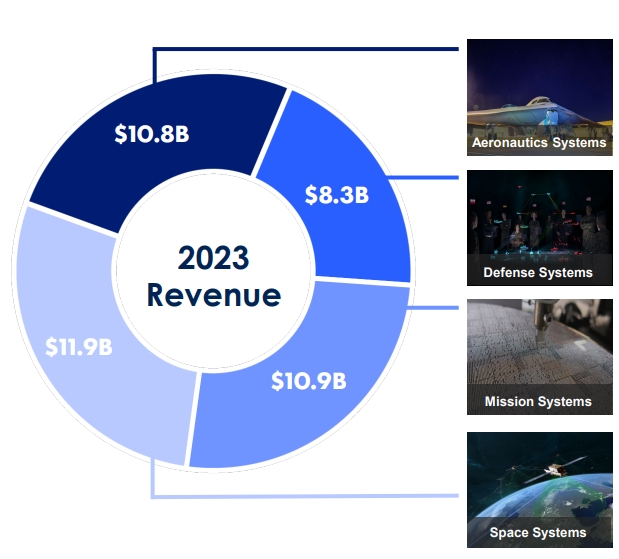
Source: Northrop
Another large segment is the mission systems division, covering a wide array of sensors, cyberdefense software, secured communication, and C4ISR (Command, Control, Communications, Computers, Intelligence, Surveillance, and Reconnaissance).
It is also a leading producer of ammunition, from small caliber to guided projectiles and large caliber.
Northrop Grumman is looking forward to its position as a supplier of advanced weapons, with the development and deployment of autonomous weapons systems:

Source: Northrop
The company is at the edge of the development of direct energy weapons (lasers), electronic warfare, anti-drone systems, and intercontinental ballistic missiles.
From an investing and financial point of view, Northrop Grumman has increased its dividend by 12% CAGR since 2014, while also reducing the share count by 31%. This resulted in $2.6B in dividends and share repurchases in 2023, while the company generated $2.1B in free cash flow.
Northrop Grumman is almost exclusively deriving its revenues from the US defense budget, with NASA making up 3% of revenues and international sales 12%.

Source: Northrop
Where companies like RTX and Lockheed provide the bulk of the US Air Force punch (fighter jet, missiles, air defense), Northrop Grumman is providing the most advanced capacity, from space to integrated command and stealth heavy bombers.
And maybe soon a significant part of the advanced drone, electronic warfare, and energy weapons as well.
With the growing importance of drone and electronic warfare, Northrop will likely be increasingly central to the US’s both offensive and defensive capabilities. And its new stealth bombers will be a key factor in keeping pace with peer adversaries like Russia and China, with whom tensions stay very high.
